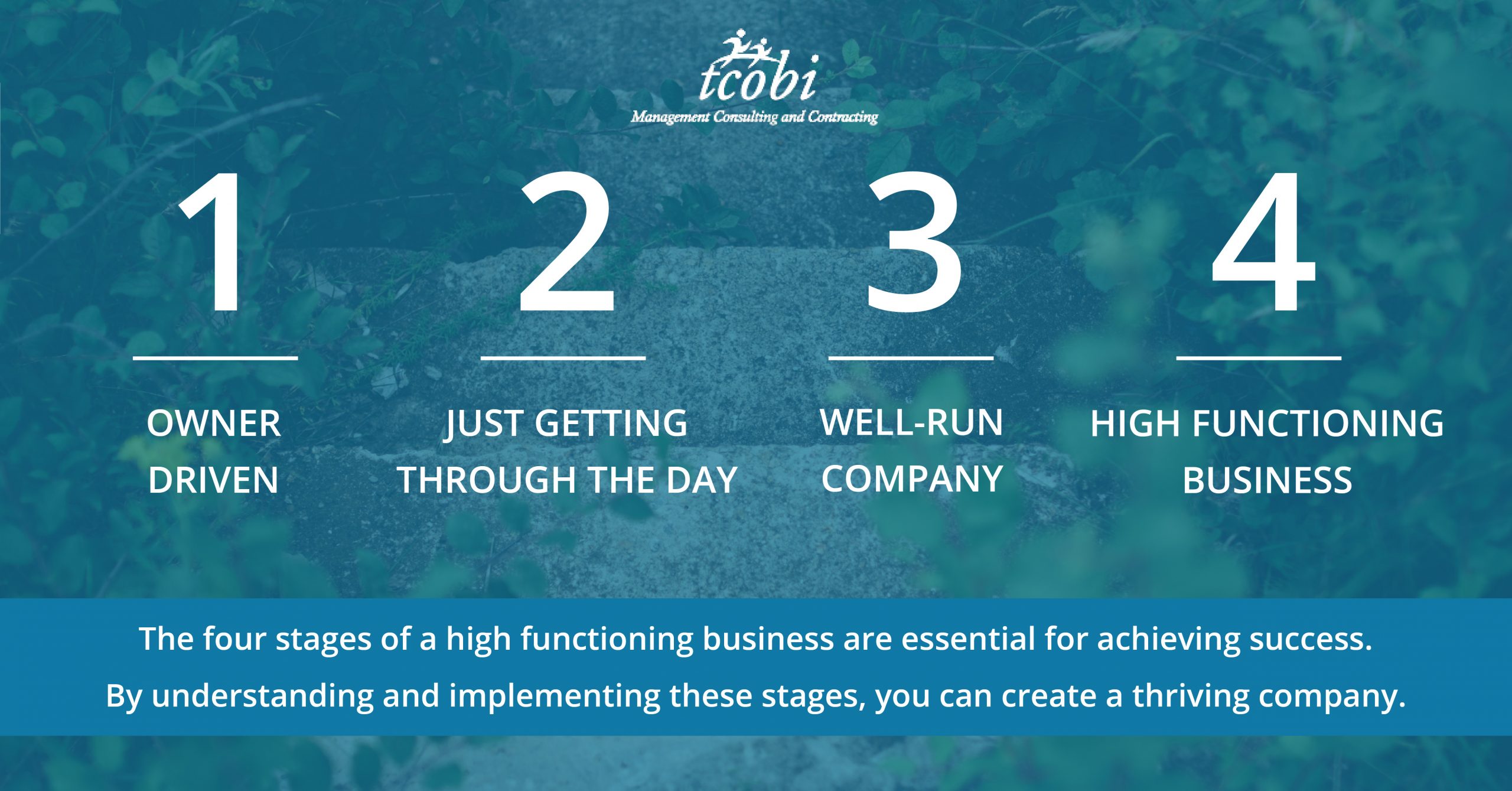Those in leadership and executive positions are always there when those…

The Four Stages of Company Growth
A well-functioning company goes through four stages in its lifecycle. Some companies move through these stages faster than others, but knowing where you are and what you need to do to move forward might mean the difference between success and failure for your firm.
First, you must learn the four stages of a well-functioning company’s life cycle if you want to be successful on your own. Understanding your company’s growth and development via these four stages is critical. You must be mindful of what is ahead because each stage has its own set of obstacles and rewards.
Using this approach, you’ll be able to keep track of your progress and ensure that you’re on the right path to success. In this blog post, we’ll walk you through each step of the process.
THE FOUR STAGES OF COMPANY GROWTH
To achieve success, your business must progress through four stages of development. The four stages are defined by the company’s behavior, which is directly influenced by the leadership stage of individual leaders.
This, in turn, impacts values, culture and performance. As a company grows, it builds capability and capacity. To achieve success, all parts of the organization must be engaged in the process, including leaders, leadership teams, and departments such as Human Resources, Operations, and Marketing/Sales & Communications.
STAGE 1: OWNER DRIVEN
This first stage is driven by the energy, vision, and will of the owner. It is marked by a lack of a team under the owner. As such, the company can only grow to the extent to which the owner is able to lead it.
When the owner allows emotions to get in the way of productivity and decision-making, it results in a number of crises, mistakes, and poor training. When this happens, the focus shifts away from the business itself and towards protecting the owner’s interests.
This can be damaging to employee satisfaction and retention, as well as relationships with suppliers and vendors. In addition, simple systems and processes are likely underdeveloped, and the brand is based primarily on the owner’s personality instead of innovation or customer service.
All of these factors together can create an atmosphere of stagnation which is only sustained by the owner’s energy. However, the business can still be profitable during this time.
STAGE 2: JUST GETTING THROUGH THE DAY
At this stage, the company can reasonably handle day-to-day operations but cannot focus on future improvements. It has been said that a company is only as good as its employees.
Although managers can handle some responsibility now, most companies struggle with low employee satisfaction, high turnover rates, and decreased productivity.
This can be traced back to a few main issues: a lack of training that focuses on development and growth, an inability to attract and retain top talent, and a failure to implement changes and growth strategies promptly.
Additionally, information flow within these companies is often restricted to the owner’s favorites, limiting the team’s overall capability and capacity.
STAGE 3: WELL-RUN COMPANY
At this stage, the company is thriving and running smoothly with a competent management team that oversees daily operations. This allows the company to make fewer mistakes and have repeatable systems and processes in place.
Personnel are now being trained on how to develop their skills, not just complete tasks. The company sets goals, achieves them, and measures its success on a variety of criteria. The leader provides input to the team and oversees their progress, but the need for direction and command is less necessary now.
This is the result when a business has strategic thinking. It can see success in many different areas: customer and employee satisfaction rise, employee retention improves, productivity increases, and costs drop.
In addition, teams can present ideas for growth and productivity improvements to the owner, employees feel proud working for the company, and the company follows policies and procedures which are easy to follow.
Finally, budgets are made, followed, and measured so that performance can be tracked and goal achievement assessed.
STAGE 4: HIGH FUNCTIONING BUSINESS
The company is a high performer at this stage. Its focus is on customer satisfaction, employee excellence and succession, while being flexible and responsive to changes in the market.
Such a company would have a future focus and be able to adapt to changes more easily than those who do not have such attributes. The resources of the company would be used well and continuously improved under such conditions.
Finally, vision drives success and everyone believes in the outcomes which are all translated into behavior.
Summary
Achieving success in a business is not easy. It requires hard work, focus, and a team that is driven by the same vision. The four stages of a high functioning business outlined in this article provide a roadmap for how to get there.
As a business owner who wants to see his business thrive, it’s important to understand the four stages and what is required for each one. With the right tools and a lot of dedication, your business can reach the pinnacle of success.
We’d like to thank J.D. Creaghan Group Inc. for sharing their insights into this topic and their book Grow! Following a Pathway to Leading a High Functioning Company.



